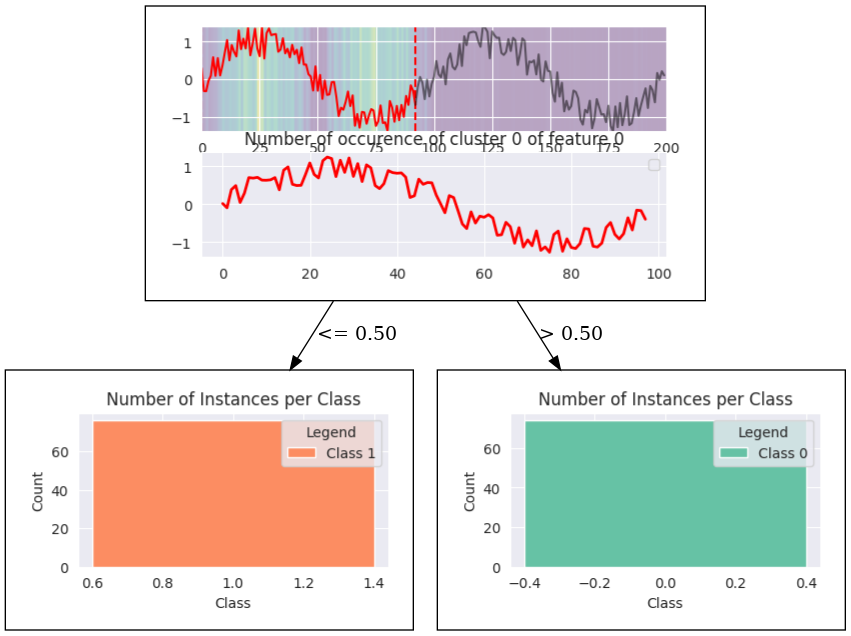Post-host prototype-based explanations with rules for time-series classifiers
Project description
TSProto
Post-host prototype-based explanations with rules for time-series classifiers.
Key features:
- Extracts interpretable prototype for any black-box model and creates a decision tree, where each note is constructed from the visual prototype
- Integrated with SHAP explainer, as a backbone for extraction of interpretable components (However, SHAP can be replaces with any other feature-importance method)
Install
LUX can be installed from either PyPI or directly from source code from this repository.
To install form PyPI:
pip install tsproto
To install from source code:
git clone https://github.com/sbobek/tsproto
cd tsproto
pip install .
Usage
For full examples on two illustrative cases go to:
- Example of extracting sine wave prototype and explaining class with existence ora absence of a prototype: Jupyter Notebook
- Example of extracting sine wave as a prototype end explaining class by difference in frequency of a prototype Jupyter Notebook
The basic usage of the TSProto assuming you have your model trained is straightforward:
from tsproto.models import *
from tsproto.utils import *
#assuming that trainX, trainy and model are given
pe = PrototypeEncoder(clf, n_clusters=2, min_size=50, method='dtw',
descriptors=['existance'],
jump=1, pen=1,multiplier=2,n_jobs=-1,
verbose=1)
trainX, shapclass = getshap(model=model, X=trainX, y=trainy,shap_version='deep',
bg_size = 1000, absshap = True)
#The input needs to be a 3D vector: number of samples, lenght of time-series, number of dimensions (features)
trainXproto = train.reshape((trainX.shape[0], trainX.shape[1],1))
shapclassXproto = shapclass.reshape((shapclass.shape[0], shapclass.shape[1],1))
ohe_train, features, target_ohe,weights = pe.fit_transform(trainXproto,shapclassXproto)
im = InterpretableModel()
acc,prec,rec,f1,interpretable_model = im.fit_or_predict(ohe_train, features,
target_ohe,
intclf=None, # if intclf is given, the funciton behaves as predict,
verbose=0, max_depth=2, min_samples_leaf=0.05,
weights=None)
After the Interpretable model has been created it now can be visualised.
# Visualize model
from tsproto.plots import *
ds_final = ohe_train.copy()
dot = export_decision_tree_with_embedded_histograms(decision_tree=interpretable_model,
dataset=ds_final,
target_name='target',
feature_names=features,
filename='synthetic',
proto_encoder=pe, figsize=(6,3))
from IPython.display import SVG, Image
Image('synthetic.png')
Cite this work
More details on how the TSProto works and evaluation benchmarks can eb found in the following paper:
Comming soon
Project details
Download files
Download the file for your platform. If you're not sure which to choose, learn more about installing packages.
Source Distribution
tsproto-0.1.3.tar.gz
(20.9 kB
view hashes)
Built Distribution
tsproto-0.1.3-py3-none-any.whl
(20.3 kB
view hashes)












